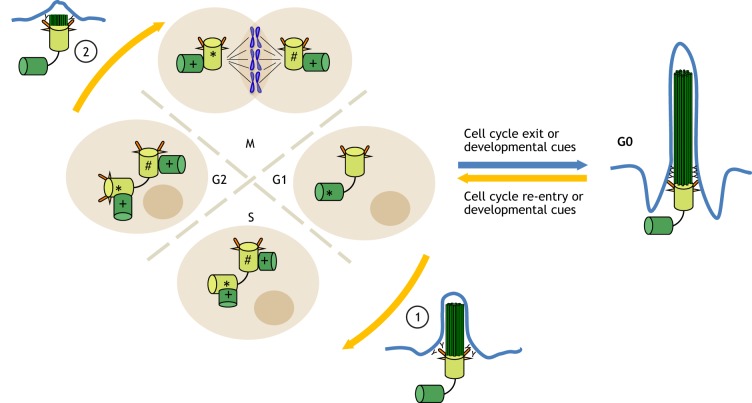Fig. 2.
A tale of two cycles: cell cycle-linked control of cilium formation and disassembly. A newly formed daughter centriole matures into a MC in two consecutive cell cycles. In the first cell cycle, new daughter centrioles (+) are assembled from an existing (mother) and older (grandmother, #) centriole. In the next cell cycle, the newly formed daughter centriole (*, dark green cylinder) gradually matures into a MC (*, light green cylinder), beginning with the loss of daughter centriole proteins at the G1/S phase and followed by the acquisition of distal appendages and sub-distal appendages in late G2 phase. The primary cilium then assembles when the cell exits the cell cycle (to enter G0) or receives developmental cues (blue arrow). Disassembly of the primary cilium occurs in a biphasic manner (yellow arrows), with the first wave occurring in G1 (1) and a second wave occurring before mitosis (2).

